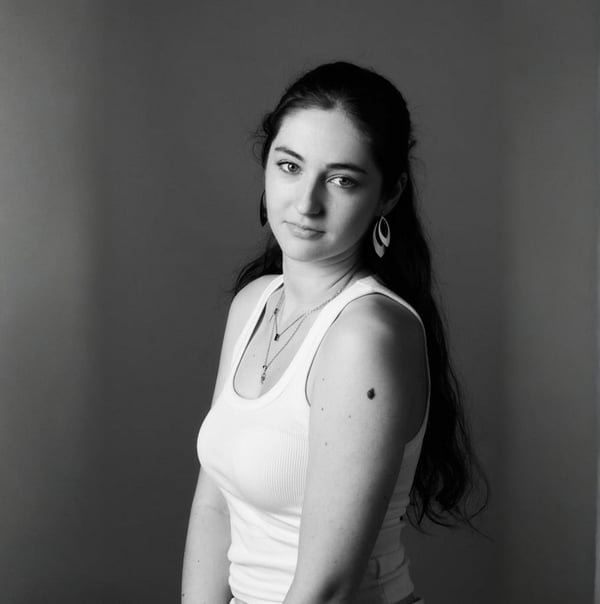The Most Iconic Fashion Magazine Covers Ever
Table of Contents
- The Power of Fashion Magazine Covers
- Top 25 Most Iconic Fashion Magazine Covers
- Vogue (March 1917) — The Birth of Modern Fashion Media
- Harper’s Bazaar (April 1938) — The Surrealist Era
- Vogue (August 1950) — Jean Patchett’s Defining Look
- Harper’s Bazaar (April 1965) — The Youthquake Revolution
- Vogue (January 1974) — Beverly Johnson Breaks Barriers
- Rolling Stone (January 1981) — Grace Jones’ Bold Expression
- Elle France (May 1986) — The Rise of the Supermodels
- Vogue (December 1990) — The Supermodel Cover
- Harper’s Bazaar (September 1992) — Madonna Redefines Power
- Vogue (October 1999) — Gisele Bündchen and the New Millennium
- Harper’s Bazaar (September 2001) — Gwyneth Paltrow’s Minimalist Chic
- Vogue (September 2003) — Jennifer Lopez Redefines Celebrity Fashion
- W Magazine (September 2005) — Angelina Jolie’s Controversial Cover
- Vogue Italia (July 2008) — The Black Issue
- Harper’s Bazaar (March 2011) — Lady Gaga in Alexander McQueen
- Vogue (September 2012) — The Rise of Digital Fashion
- Vogue (March 2014) — Kim and Kanye’s Controversial “Power Couple” Cover
- Vogue Arabia (March 2017) — Gigi Hadid Makes History
- Harper’s Bazaar (September 2018) — Rihanna’s Trailblazing Beauty Moment
- Vogue (September 2020) — Naomi Osaka and the Power of Purpose
- British Vogue (September 2021) — Edward Enninful’s Vision of Diversity
- Harper’s Bazaar (2022) — Beyoncé’s Renaissance Aesthetic
- Vogue (2024) — Zendaya’s Modern Elegance
- Modelia: The AI Tool Empowering the Future of Fashion Covers
- The Lasting Impact of Fashion Magazine Covers
- Final Thoughts
- Frequently Asked Questions (FAQ)
Fashion magazines have long been more than just publications, they are cultural markers that define beauty standards, challenge conventions and capture the spirit of entire eras. From the sleek sophistication of Vogue to the bold creativity of Harper’s Bazaar, the most iconic fashion magazine covers are not just photographs; they are visual statements that shaped the industry and influenced how the world sees fashion.
In this article, we revisit 25 of the most powerful and iconic fashion covers ever printed, exploring what made them revolutionary and how they continue to inspire today’s creative generation.
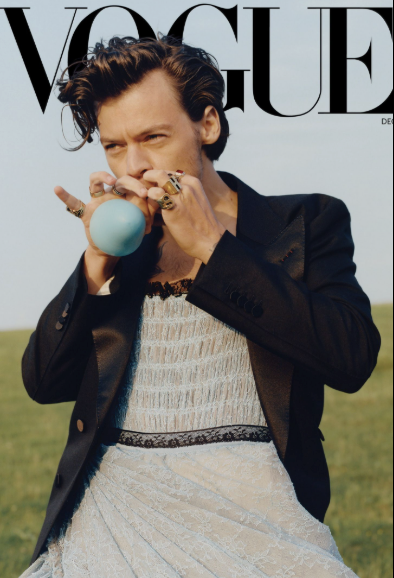
The Power of Fashion Magazine Covers
For decades, fashion magazine covers have been the ultimate mix between art, commerce and identity. They reflect cultural shifts, celebrate individuality, and often spark global conversations. A great cover does more than sell copies, it defines a moment in fashion history.
In an age before social media, covers were how audiences met the faces of beauty, style and rebellion. Even today, despite digital transformation, an unforgettable cover can go viral, influence fashion direction, and establish a new visual narrative.
These 25 covers stand as milestones, not just for their aesthetic brilliance, but for their ability to break barriers and redefine fashion’s voice.
Top 25 Most Iconic Fashion Magazine Covers
Vogue (March 1917) — The Birth of Modern Fashion Media
The early Vogue covers from the 1910s marked the beginning of modern fashion illustration. The March 1917 issue, designed by George Wolfe Plank, blended art nouveau style with elegance and sophistication, setting the standard for future Vogue covers. It captured not only fashion but also the lifestyle of an emerging modern woman.
Harper’s Bazaar (April 1938) — The Surrealist Era
This Harper’s Bazaar cover, designed by Alexey Brodovitch and featuring Salvador Dalí’s surrealist imagery, changed fashion editorial design forever. It merged high art with fashion photography, proving that magazines could be as much about creativity as they were about commerce.
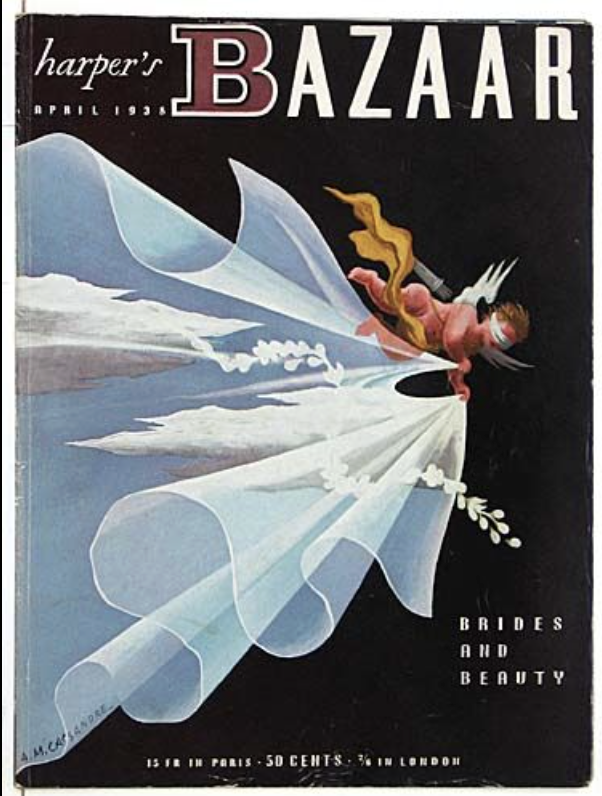
Vogue (August 1950) — Jean Patchett’s Defining Look
Shot by Erwin Blumenfeld, this Vogue cover is one of the most recognizable in fashion history. With only half of model Jean Patchett’s face visible — a red lip, arched brow, and mysterious gaze — it introduced minimalism and modernism into 1950s visual culture.
Harper’s Bazaar (April 1965) — The Youthquake Revolution
Twiggy’s debut marked the rise of youth culture in fashion. With her short hair, bold lashes, and playful expression, Harper’s Bazaar embraced a new kind of beauty that resonated with the rebellious spirit of the 1960s.
Vogue (January 1974) — Beverly Johnson Breaks Barriers
Beverly Johnson became the first African American woman to appear on the cover of Vogue. Her historic appearance shattered long-standing beauty norms and opened doors for greater representation within the modeling industry.
Rolling Stone (January 1981) — Grace Jones’ Bold Expression
Though not strictly a fashion magazine, this Rolling Stone cover featuring Grace Jones’ geometric makeup and sculptural pose remains one of the most iconic fashion covers ever. It embodied confidence, strength, and avant-garde glamour.
Elle France (May 1986) — The Rise of the Supermodels
Elle France embraced the supermodel era with covers featuring women like Cindy Crawford and Linda Evangelista. These covers symbolized power, independence, and a new definition of beauty rooted in confidence.
Vogue (December 1990) — The Supermodel Cover
Peter Lindbergh’s legendary Vogue cover featuring Naomi Campbell, Cindy Crawford, Linda Evangelista, Christy Turlington, and Tatjana Patitz is considered one of the greatest in fashion history. It defined the term “supermodel” and launched an era of global fashion icons.
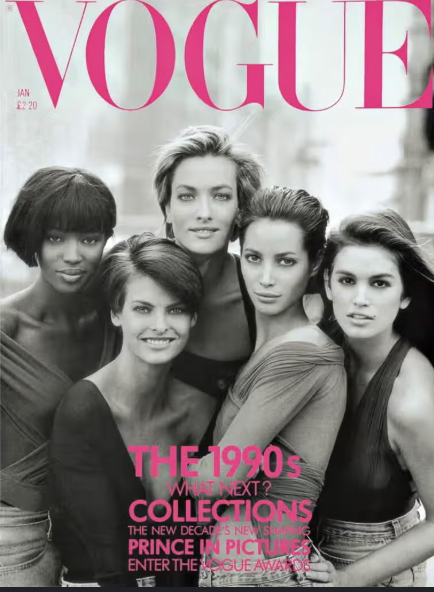
Harper’s Bazaar (September 1992) — Madonna Redefines Power
Madonna’s Harper’s Bazaar cover, shot by Patrick Demarchelier, blended fashion with empowerment. Her bold stare and structured attire symbolized a new kind of feminine strength that echoed throughout the decade.
Vogue (October 1999) — Gisele Bündchen and the New Millennium
With this cover, Vogue introduced Gisele Bündchen as the “return of the sexy model.” Her sun-kissed skin and natural expression marked the end of the heroin-chic era, ushering in a new appreciation for vitality and health in fashion imagery.
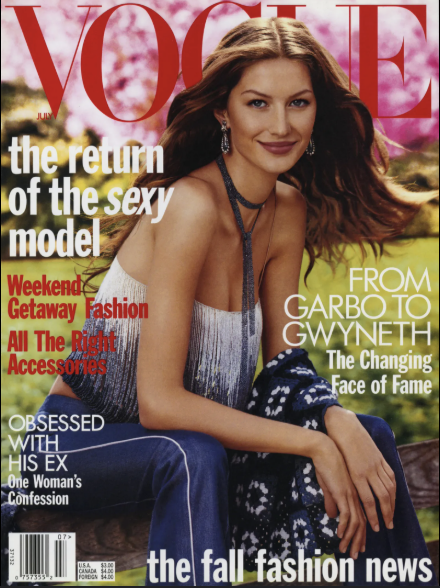
Harper’s Bazaar (September 2001) — Gwyneth Paltrow’s Minimalist Chic
This cover represented a shift toward simplicity after the opulence of the late 1990s. The clean background, natural makeup, and neutral tones reflected the growing minimalism trend of the early 2000s.
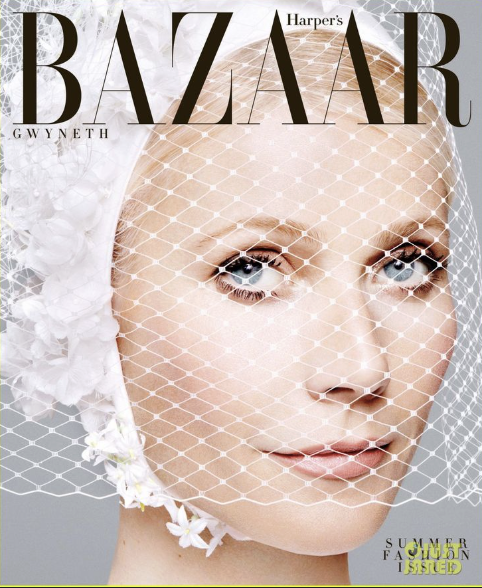
Vogue (September 2003) — Jennifer Lopez Redefines Celebrity Fashion
Jennifer Lopez’s cover symbolized the merging of celebrity and fashion. It highlighted the increasing influence of entertainment figures in shaping global fashion trends.
W Magazine (September 2005) — Angelina Jolie’s Controversial Cover
This cover blurred the line between art and scandal. Photographed by Steven Klein, Angelina Jolie’s image challenged traditional notions of beauty and femininity, making it one of the most talked-about covers of the decade.
Vogue Italia (July 2008) — The Black Issue
Franca Sozzani’s Vogue Italia “Black Issue” exclusively featured Black models, including Naomi Campbell, Jourdan Dunn, and Liya Kebede. It was a landmark statement for diversity and remains one of the most important fashion magazine covers in history.
Harper’s Bazaar (March 2011) — Lady Gaga in Alexander McQueen
This cover combined high fashion and pop culture perfectly. Lady Gaga’s ethereal look in Alexander McQueen paid tribute to the late designer while celebrating fashion as performance art.

Vogue (September 2012) — The Rise of Digital Fashion
This cover marked the beginning of digital-era influence. With high-definition imagery and interactive online components, Vogue began merging print prestige with digital engagement, showing that fashion media was evolving.
Vogue (March 2014) — Kim and Kanye’s Controversial “Power Couple” Cover
Love it or hate it, this cover generated conversation around celebrity influence, representation, and what constitutes high fashion. It blurred the boundaries between pop culture and traditional editorial prestige.
Vogue Arabia (March 2017) — Gigi Hadid Makes History
Gigi Hadid graced the first-ever Vogue Arabia cover, marking a monumental moment for representation in Middle Eastern fashion. It balanced cultural respect with modern elegance.
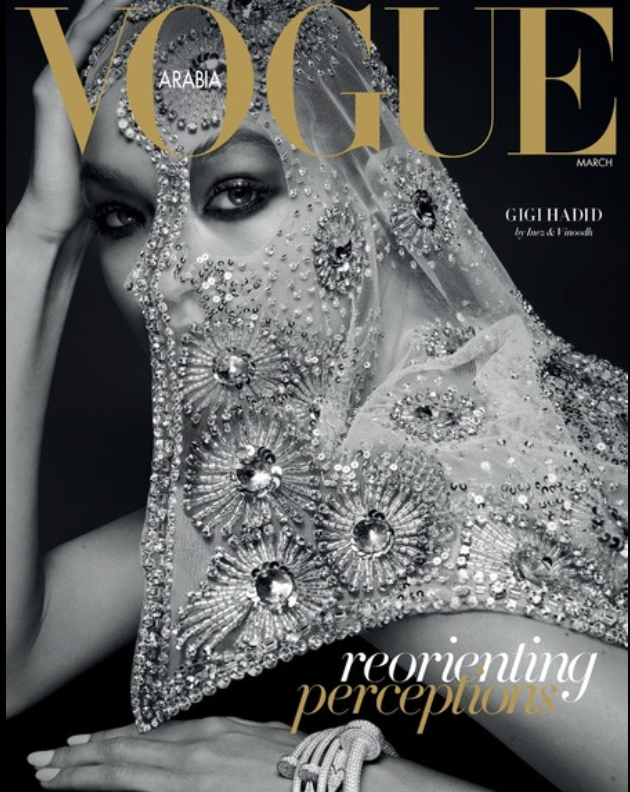
Harper’s Bazaar (September 2018) — Rihanna’s Trailblazing Beauty Moment
Rihanna’s experimental makeup and bold aesthetic proved that diversity and innovation were shaping the future of fashion imagery. This cover was a modern celebration of individuality.
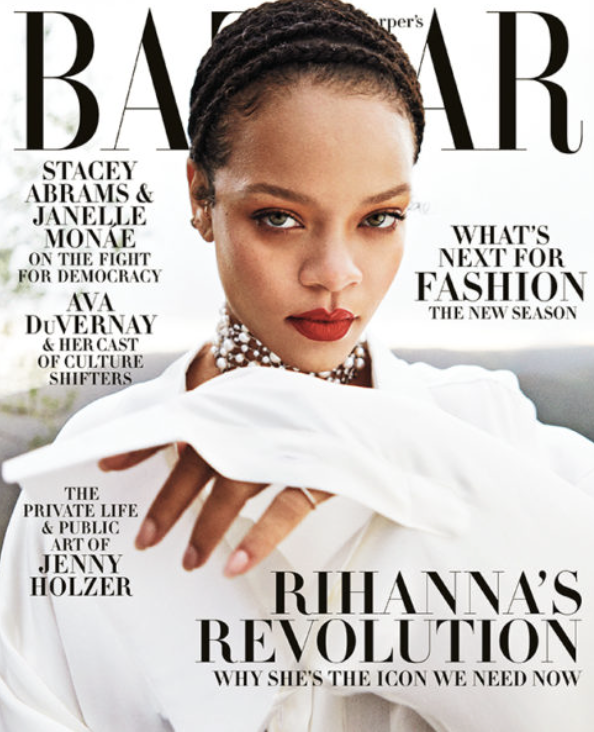
Vogue (September 2020) — Naomi Osaka and the Power of Purpose
Featuring tennis star Naomi Osaka, this cover represented a new generation of athletes redefining beauty, activism, and influence. It showed how fashion can amplify social awareness while maintaining visual strength.
British Vogue (September 2021) — Edward Enninful’s Vision of Diversity
Under the leadership of Edward Enninful, British Vogue celebrated a more inclusive industry. The cover featured models from different backgrounds, body types, and genders, redefining the face of fashion.
Harper’s Bazaar (2022) — Beyoncé’s Renaissance Aesthetic
Beyoncé’s Harper’s Bazaar cover reintroduced glamour and artistic storytelling. Combining Western-inspired visuals with luxury couture, it represented a moment of transformation and rebirth in fashion.
Vogue (2024) — Zendaya’s Modern Elegance
Zendaya’s cover for Vogue in 2024 encapsulated the new definition of sophistication. Combining simplicity with power, her look reflected how fashion today embraces individuality, authenticity, and timeless beauty, values that echo across all iconic fashion covers.

Modelia: The AI Tool Empowering the Future of Fashion Covers
Modelia is one of the first AI-powered platforms that allows designers, brands, and content creators to generate fashion magazine covers with incredible realism and creative control. Unlike static photography, Modelia’s AI understands style, lighting, and editorial composition, allowing users to design original cover concepts featuring lifelike AI models.
Using Modelia’s AI Magazine Cover Generator, you can:
Create Vogue-style covers for campaigns or portfolios.
Customize background themes, typography and color palettes.
Generate photo-realistic AI models that align with your brand’s aesthetic.
Produce high-quality, print-ready visuals in minutes.
This innovation brings a new era of creative freedom, giving independent designers and small brands access to the same level of visual storytelling once reserved for major magazines.
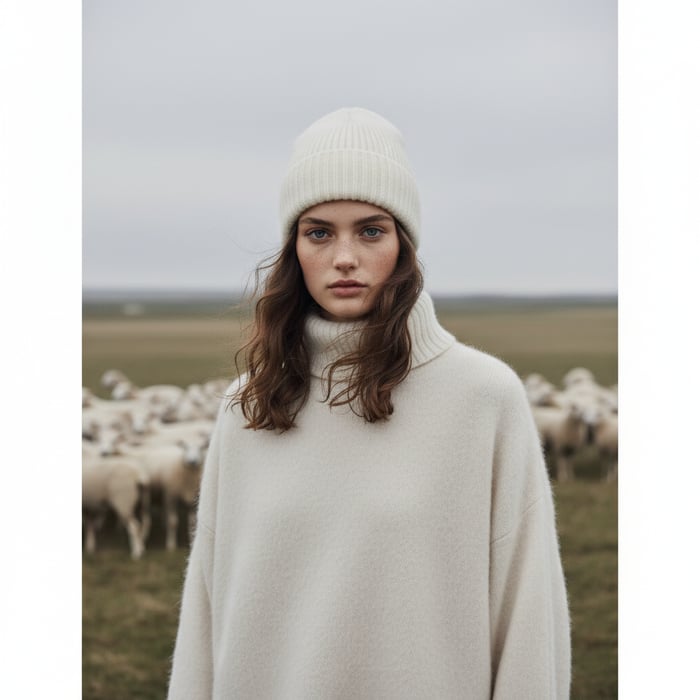
Try to generate your own magazine cover with Modelia for free
The Lasting Impact of Fashion Magazine Covers
Each of these covers represents more than an image, it’s a story of cultural evolution. They show how fashion has transitioned from exclusivity to inclusivity, from static beauty to dynamic expression.
Covers are visual time capsules. They document how society sees style, gender, and identity, while inspiring designers, photographers, and creators to keep pushing boundaries. From hand-drawn covers in the early 20th century to AI-generated artistry today, their evolution mirrors the transformation of fashion itself.
Final Thoughts
The world of fashion magazine covers is both nostalgic and forward-thinking. The timeless appeal of Vogue covers, the daring innovation of Harper’s Bazaar, and the cultural commentary of Vogue Italia remind us that fashion is never just about clothing, it’s about storytelling.
As we enter a new digital era, AI tools like Modelia are reshaping how editorial design is imagined. With Modelia, anyone can create high-quality, custom fashion design visuals, including magazine-style covers that look ready for print. It bridges the gap between creativity and technology, giving designers full control over their artistic vision.
Fashion covers have always been a reflection of their time. Today, they also reflect the limitless possibilities of digital creativity.
Start creating your own fashion covers using AI
Frequently Asked Questions (FAQ)
What makes a fashion magazine cover iconic?
A cover becomes iconic when it captures a cultural moment, breaks boundaries, or influences how we see beauty, identity, and fashion.
Which Vogue covers are considered the most influential?
Some of the most famous Vogue covers include the 1950 Jean Patchett cover, the 1990 Supermodel cover by Peter Lindbergh, and the 2024 Zendaya issue, each defining a major shift in fashion history.
How are AI tools like Modelia changing fashion editorials?
Modelia enables designers and content creators to produce realistic, customizable magazine covers in minutes. It uses AI to simulate photography, lighting, and artistic direction, revolutionizing editorial design.
Can independent designers create their own fashion covers?
Yes. With tools like Modelia’s AI Magazine Cover Generator, anyone can create professional-quality fashion covers for branding, portfolios, or creative projects.
What’s the difference between Vogue and Harper’s Bazaar cover styles?
Vogue often focuses on sophistication and artistry, while Harper’s Bazaar leans toward creativity, experimentation, and storytelling. Both have shaped fashion culture in unique ways.
How would you rate this article:
Related Articles
- How to Flip an Image in Seconds
- Top AI Fashion Companies Innovating the Future of Fashion with Artificial Intelligence
- The Best Sustainable Fashion Brands Changing the Industry
- How AI Transforms the Modern Design Process
- Shopify vs Magento: Key Differences Explained
- How to Create a Clothing Brand: Step-by-Step Guide
- 10 AI Design Tools Revolutionizing Fashion and Ecommerce Design
- How to Style Cool Baggy Outfits with Confidence
- AR Magic Mirror: How Augmented Reality is Transforming Fashion Retail and Shopping Experiences
- Design Eye-Catching Magazine Covers with AI
